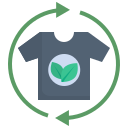Reducing Carbon Footprints with Eco-Friendly Apparel
Today’s chosen theme: Reducing Carbon Footprints with Eco-Friendly Apparel. Welcome to a hopeful space where style meets responsibility, stories inspire action, and small wardrobe decisions add up to meaningful climate impact. Subscribe to stay inspired, share your wins, and help build our low-carbon fashion community.

From Fiber to Footprint
Every garment begins its journey in energy-intensive steps: growing or extracting fibers, spinning, dyeing, cutting, sewing, and shipping. Each stage carries emissions, meaning mindful choices—from materials to care—can meaningfully reduce your clothing’s overall carbon footprint.

Numbers You Can Wear
Estimates vary, but fashion is often linked to a measurable slice of global emissions. Small shifts matter: extending a garment’s life, choosing recycled or lower-impact fibers, and washing efficiently stack up, turning everyday habits into reliable climate-positive routines.
Materials That Shrink Emissions
Organic practices cut harmful inputs, while regenerative methods improve soil health, potentially storing more carbon underground. Seek credible certifications, ask brands about farm-level sourcing, and celebrate labels that publish supply chain details rather than vague sustainability slogans.




Shopping Smarter Without the Guilt
Certifications That Actually Help
Look for standards that verify fiber sourcing and chemical safety, such as GOTS, OEKO-TEX, or bluesign. Certifications aren’t perfect, but they add a layer of accountability. Ask brands which standards they meet and why, then share useful finds with our community.
Decoding Brand Claims
Real progress includes supply chain traceability, lifecycle assessments, and science-based targets. Beware of vague buzzwords like “eco” without data. If a brand impresses you with clarity, tell us in the comments; collective feedback encourages others to raise their game.
Secondhand First, New Only When Needed
Explore thrift, consignment, rental, and community swaps before buying new. You’ll save money, avoid production emissions, and uncover unique styles. Share your favorite secondhand sources and subscribe for our monthly roundup of reader-approved marketplaces and swap events.
Community Stories and Small Wins

Maya’s Denim Detox
Maya paused new denim for twelve months, repaired two beloved pairs, and found a perfect thrifted fit. She says her confidence grew with every re-wear. Add your own challenge below, and we’ll feature standout journeys in future posts.

A Campus Swap That Grew
Three friends organized a small swap; within a semester, it became a lively monthly tradition. Hundreds of pieces found new homes, and participants reported buying fewer new items. Planning a swap? Comment your city, and let’s help you kickstart it.

From Skeptic to Storyteller
Jon doubted his actions mattered until tracking his laundry energy use and repair saves. The numbers nudged him forward, but the community kept him going. Subscribe for templates to measure your impact and motivational prompts to share with friends.

Week 1: Audit and Intentions
Count what you own, identify gaps, and set a simple rule like “secondhand before new.” Photograph pieces you want to re-wear, and list repairs. Share your goals in the comments so we can cheer you on together.
Week 2: Care and Repair Sprint
Wash cold, line dry, and mend the easy fixes first. Host a repair session, trade tools, and try a visible darning tutorial. Post your progress and subscribe for our quick-check laundry guide to keep the energy savings rolling.
Weeks 3–4: Mindful Acquisition
If you truly need something, shop secondhand or choose certified low-impact materials, and prioritize durability. Track wears immediately to cement the habit. Report back with what worked, what didn’t, and any brands that earned your trust with transparent data.
